Despite all the talk of moving to community care, hospitals continue to draw the lion’s share of money and attention. HSJ’s roundtable panel had some forthright suggestions on how to deliver a much bigger role for community services, writes Alison Moore
Community services in many areas have undergone the biggest organisational shake-up in their histories over the last few years. But, as the dust has settled, they are being called on to play a critical role in treating people outside hospital while also making substantial efficiency savings.
How community services can meet these challenges was the subject of an HSJ roundtable, sponsored by Newton.
Setting the scene, roundtable chair Mike Farrar, independent management consultant and former NHS Confederation chief executive, said that the policy direction had long been towards supporting people to live independently. But if investment was looked at, the NHS was doing the opposite.
“We know that the amount of money after the election will be less than before, despite what is said, and demand will increase. This is all hard to get across to people,” he said.
“What is your sense of the opportunities and the disconnect with the reality of life on the ground? Are you seeing light at the end of the tunnel?” he asked the panel.
Roundtable participants
- Nick Barlow, associate director and head of healthcare, Newton
- Marion Dinwoodie, chief executive, Kent Community Health Trust
- Nigel Edwards, chief executive, Nuffield Trust
- Mike Farrar, independent management consultant and former chief executive, NHS Confederation (roundtable chair)
- James Kraft, director of transformation and special projects director, Virgin Care
- Paul Maubach, chief officer, Dudley Clinical Commissioning Group
- Crystal Oldman, chief executive, the Queen’s Nursing Institute
- Jane Wells, director of adult community services, Oxleas Foundation Trust
- Andy Williams, accountable officer, Sandwell and West Birmingham Clinical Commissioning Group
Acute sector focus
Sandwell and West Birmingham Clinical Commissioning Group accountable officer Andy Williams said the pressure the system was under presented an opportunity.
“There is much more earnest and serious conversation going on than before,” he said.
But he warned that the system was oriented towards access to secondary care – whether consideration was given to money, policy drivers or which chief executives were sacked.
James Kraft, director of transformation and special projects director at Virgin Care, said: “You can’t have a system where you have the vast majority of providers on block contracts and a voracious provider on payment by results. As soon as there is a vacuum in the acute sector, it sucks in more money.”
The only answer was an integrated approach, he added.
But the system as a whole is stretched, said Marion Dinwoodie, chief executive of Kent Community Health Trust: “We can’t take any more people into the acute sector. Quality inspectors say we can’t take any more people in.”
Several panellists pointed out the importance of language and the narrative around care. Crystal Oldman, chief executive of the Queen’s Nursing Institute, said that out of hospital care was meaningless if people had not been in hospital, while Paul Maubach said in Dudley, where he is clinical commissioning group chief officer, they referred to mutually networked care, which represented the complexity of the situation.
Jane Wells, director of adult community services at Oxleas Foundation Trust, said: “A hospital is just a collection of beds for episodic care.” She outlined the array of services that were offered in the community – but Nuffield Trust chief executive Nigel Edwards argued that community services did not offer a clear value proposition and had a “1970s business model”.
“They are trying to do so many disparate different things within the same organisation,” he observed.
But Ms Dinwoodie argued the unifying factor was that services were built around the patient and their family.
“There needs to be a common denominator and part of it is the preventative model – if we can catch people before they become unwell and have a multiagency response that becomes the common denominator,” she said.
Mr Maubach said aligning community services and primary care involved recognising the mutual responsibility and the benefits of working together. Co-production with the patient was the way ahead on this.
‘The public should be taking to the streets about the lack of district nurses, not about hospital closures’
“When a person goes into hospital, they hand themselves over to the secondary care organisation. But, when they are in the community, the individual is by and large still the main provider of their own healthcare and wellbeing,” he said.
Ms Oldman said there needed to be action on empowerment so that people did not become addicted to care.
“A logical step is about shared health records, or at least patients accessing their own records,” she said. “In terms of integrated care, we are constantly looking for a system solution. Goals of care should be agreed with patients.”
Nick Barlow, associate director and head of healthcare at Newton, said he had worked with two providers that were brought together under one banner. “Two years down the line, if you speak to the clinical team about how care is delivered, there’s a great deal of frustration that things have not changed. How much of this is about high level financial payments and how much of it is around the day to day business of delivering care?”
Culture is always the issue, added Mr Kraft. He said Virgin Care was getting some of its occupational therapists to work alongside those in hospitals, which can be challenging.
Trying to transform teams and work with other partners with a workforce that is ageing make it difficult, he said.
“We are changing their relationship, their teams and their relationship with GPs and their practices.”
Mr Farrar asked how a narrative about the value of community services could be promoted in an environment where the public was willing to march to “save” hospitals. He highlighted some of the changes and challenges community services were likely to face: a push towards capitation budgets, capability challenges, whether community services were geared up to deliver this, and changes in the model of care.
“In terms of the narrative, we are genuinely convinced that people should get as much care as soon as possible in their own homes, but we have not got the public concerned about that,” he said, adding that Ms Oldman had mentioned that only five district nurses had been trained in London last year.
“I think the public should be taking to the streets about the lack of district nurses, not about the closure of hospitals,” he said.
Ms Dinwoodie said community services needed to become an innovative place to work. Her staff were a hidden army, she asserted, and many of them have skills that previously would have been found in the acute sector. The trust also used staff in pay bands three and four to do some injections and assessments. The opportunity to do a postgraduate certificate in healthcare – accredited by Kent University – was also a draw for staff.
Over the last 20 years community services have expanded to offer a wide range of pathways and services, pointed out Ms Wells, whereas in the past it might just have been seen as being about district nurses. There was a need for specialist knowledge to help people to navigate the system.
“For me the issue is visibility,” said Mr Williams. “The reason people align with institutions is that they are visible. We have to make community services a tangible offer.”
But how to change that public perception was a challenge.
Mr Maubach pointed out how “addicted” the public was to hospital care.
“People feel hospitals are a place of safety,” he said. They believed they could rely on and were very emotive about them.
Career choices
Ms Oldman said: “I absolutely agree about the invisibility of community services. That extends to attracting people to work in nursing – people thinking about becoming a nurse don’t think about becoming a district nurse or a practice nurse.”
Community settings needed to be promoted – for example, as the place to have end of life care – in order to shift this narrative.
But does great work delivered in community services get picked up and reproduced across the country? Mr Farrar linked this to the visibility of data, saying fantastic work had been done in some areas on falls prevention but had not spread.
What can be done to release additional resources for community services? Is it dependent on closing hospital beds, as some panellists felt?
‘Some district nurses only spent two hours out of an eight hour shift in patients’ homes’
Mr Edwards pointed out the challenges in closing hospital beds: some of his recent work had shown that on current trends, an additional 17,000 beds would be needed over the next six years.
“The puzzle is that the data has been around for a long time and we have failed. What is different now?”
But Ms Dinwoodie suggested the inertia of the system was starting to be overcome. A factor in this change was the need for 24/7 services, she said. In West Kent, a third of unplanned admissions were between 4pm and 8pm, and another third were overnight.
Mr Williams said it was necessary to be clear about what success looked like: “We need to get a sense of realism about what can be achieved. We know that clinical decision making changes based on the care available – the contextual factors make the difference.”
Creating capacity in the community was important, suggested Mr Barlow. He had spent time with compassionate district nurses who only spent about two hours out of an eight hour shift in patients’ homes. There was a tremendous burden of bureaucracy – for example, they had to fill in a form every time they administered eye drops. They spent a lot of time in their cars, which raised issues around how their time was scheduled. “There is more we can do to add in capacity without adding costs,” he said.
Mr Kraft said Virgin Care’s nursing teams had increased time spent with patients by 30 per cent and now see 50 per cent more people. This had been achieved by mobile working, reducing the information they had to collect and good scheduling.
“That’s the sort of capacity work all community providers need to be doing because it is the only way we can do it without creating more costs.”
Ms Oldman said that some nurses had saved two hours a day through using software designed for district nurses. But there was also a need to ensure future capability. Some initiatives had been successful, such as placing district nurses in accident and emergency departments to “turn round” frail older people who need not be admitted if the right care was available at home.
Sometimes, though, staff were being run ragged. Getting them to change was a challenge, said Ms Wells. People going into hospital and then coming out had more complex conditions than in the past. Community geriatricians and risk management could make a massive difference.
But where could savings be released? Mr Edwards highlighted the “tail” of people admitted to hospital who stayed for a long time and could be better cared for in other settings. He suggested that one way forward could be a system that provided professional support “forensically” and that integrated with carers
and families.
Ms Dinwoodie noted that informal networks around patients were often becoming more stretched as well, and carers, for example, needed respite. But she added there were suggestions that social care and healthcare workers in the lower pay bands could be more generic.
Mr Maubach added: “We are trying to bring teams together. We are getting them to network around individuals so they can make best use of their skills and there is no duplication.”
He suggested there was an opportunity to redefine what was provided in the community, and questioned why so many follow up appointments took place in hospitals.
“At the moment one of the problems is that people are not sharing a common objective. If they do, it is around admission avoidance and it should be around health and wellbeing,” he added.
‘There is a need to try to work with people so they are incentivised to do things that help the system’
And Mr Williams believed there was a missed opportunity to interact with people in a different way – as has happened in other sectors, such as online banking. There was a need to try to work with people so they were more incentivised to do things that would help the system.
However, sometimes it was hard to do this because it impacted on access – it was not possible to insist that people called 111 before going to A&E, for example. Mr Farrar suggested that information, such as data on waiting times in A&E, had a role to play in encouraging this.
Mr Kraft said health systems in the US tried to get people to work at the top of their licence.
“The non-clinical care coordinator is the first point of contact,” he said. “That’s the person with the holistic view of that patient’s life and what is important to them.”
Mr Edwards questioned whether this could result in more people visiting the patient, because each was doing the work that was at the top of their licences, when it might make more sense for one person to offer more of the care.
Long term budgets
But if payment systems do change what sort of model would work best with a capitation based budget?
Mr Farrar said budgets needed to be long term, as was the case in the US and the health system in Valencia. An initial injection of capital might also be needed. He questioned whether community service providers could be squeezed out between district general hospitals and GPs, and whether they would have a population based approach.
Mr Maubach said: “We should be building population health services around practices. That is a fabulous opportunity for community services to partner with primary care.”
But Mr Edwards questioned whether population health was synonymous with everything community services did. Services needed to be looked at individually – at the moment it was an “accident of history” that many of them were part of the community services structure.
Sometimes community nursing services could be squeezed out in integrated trusts, pointed out Ms Oldman, who knew of a case where highly skilled community practitioners were put on wards in advance of a Care Quality Commission inspection.
Mr Williams said there was no “magic bullet” to some of these issues, but many of the necessary decisions could be taken now, such as risk assessing individuals.
But he warned of potential problems ahead: “How do we hold organisations to account if, two years into a five year contract, the health sector comes under pressure because waiting times are seven hours in A&E?”
Mr Edwards said: “There is not an overall panacea. Many of the issues we have got are much more about how the individual bits of the system relate to each other.”
Cultural change is the biggest challenge
As a fellow panellist accurately put it during the roundtable, “culture is always the issue”.
When it comes to implementing change in organisations, the biggest challenge is almost always convincing the people who will be directly affected by that change – from the frontline workers to top level management.
If you can’t get everyone on board, it’s almost impossible to realise real, tangible benefits. So in looking at how to help community teams cope with increased demands as a result of shifting the balance of care closer to home, culture is a huge issue.
Community teams are already overstretched. Staff are fearful that terms such as “integration” and “seven day a week working” are just other ways of saying “do more with less”.
Throughout the roundtable there was a lot of talk about needing to deliver a cultural change, both internally in organisations that have become burnt out and bogged down in bureaucracy, and in the patient population, who often perceive hospital care as better than community care.
There was a lot of talk about organisational restructures, the impact they could have, and talk about the impact of funding mechanisms. But if we’re not careful, there’s a risk of these becoming excuses wrapped up in the idea that we need to change culture first, and then behavioural change will follow.
Culture and behaviour are intertwined. Culture takes time to grow, change and adapt. It can’t be forced. But positive process and system changes can. From our work on many health and social care improvement programmes, I know it’s possible for small wins, achievements and great results to happen really fast in a way that makes a big impact on everyone involved.
In order to realise the full benefit of this, staff need to be invested in and be part of the changes. They need to be listened to and shown visible evidence of change. To be given the opportunity to see how doing things one way can lead to less than desirable results – for example, too much admin or travel time and not enough time with patients – and doing them a different way can completely shift the balance, allowing for more value adding, patient focused time. If staff is part of – and champion – the change, it will also become more strongly embedded and sustainable. A positive culture is one of the results of a positive environment.
The only way people get a chance to really change is through making behavioural changes first. Let’s not wait for big top-down or cultural changes to come from nowhere. Let’s make practical, tangible things happen on the ground right now.
Nick Barlow is associate director and head of healthcare for Newton


















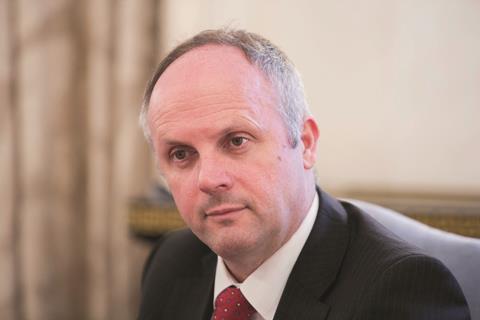
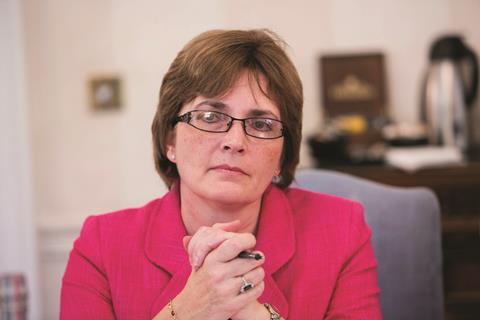

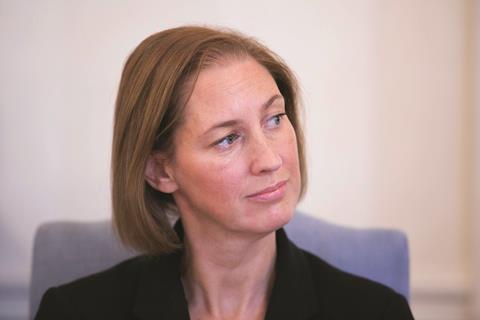

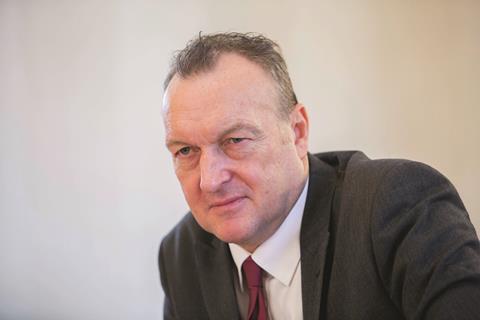
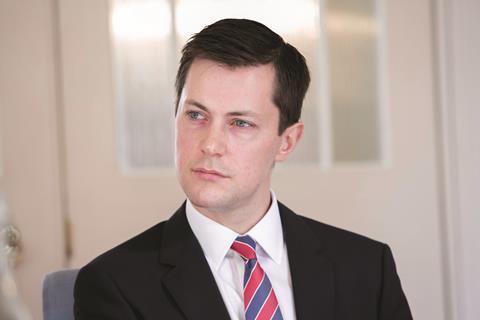

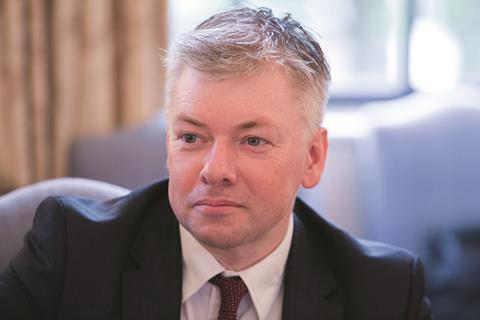






No comments yet